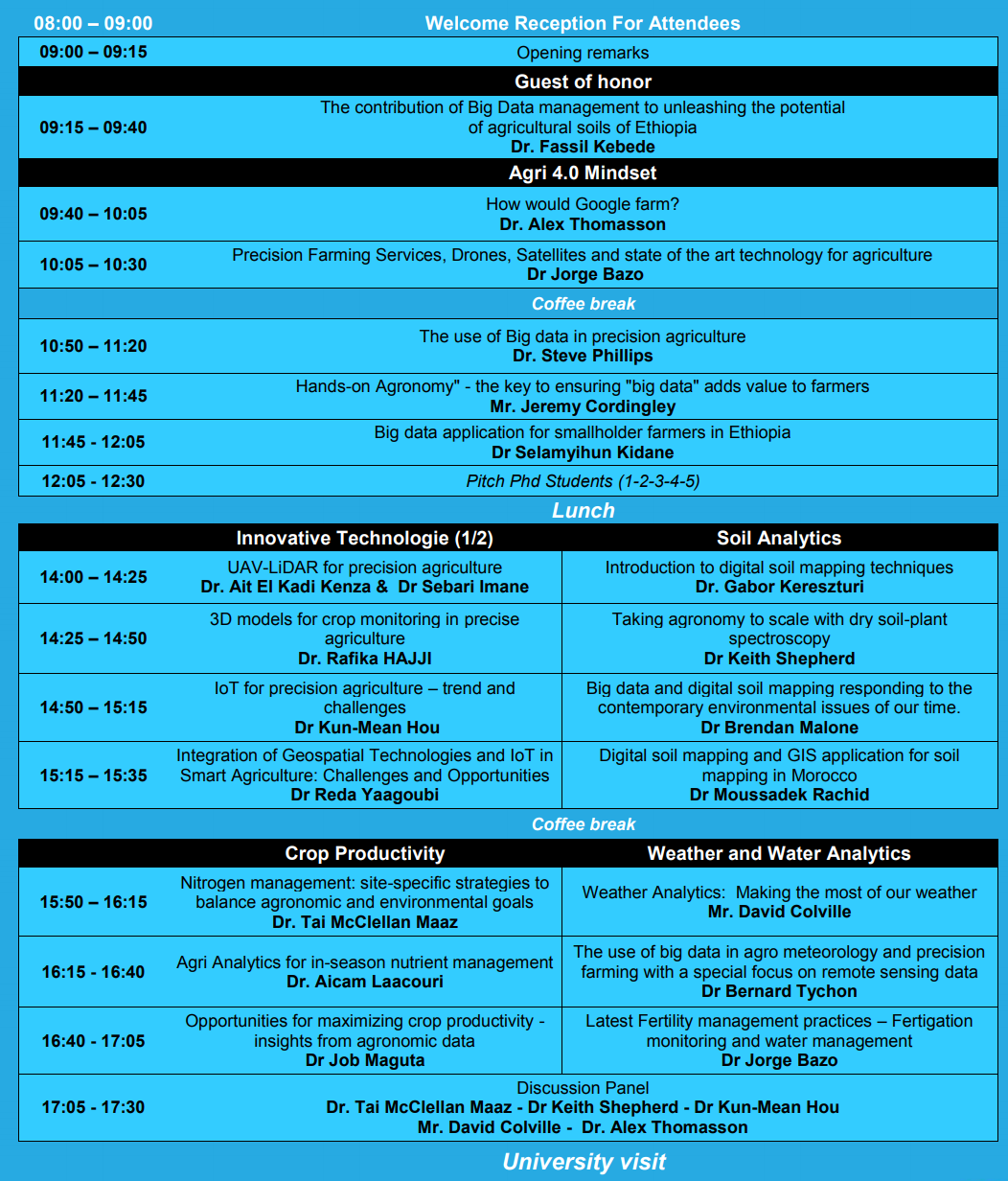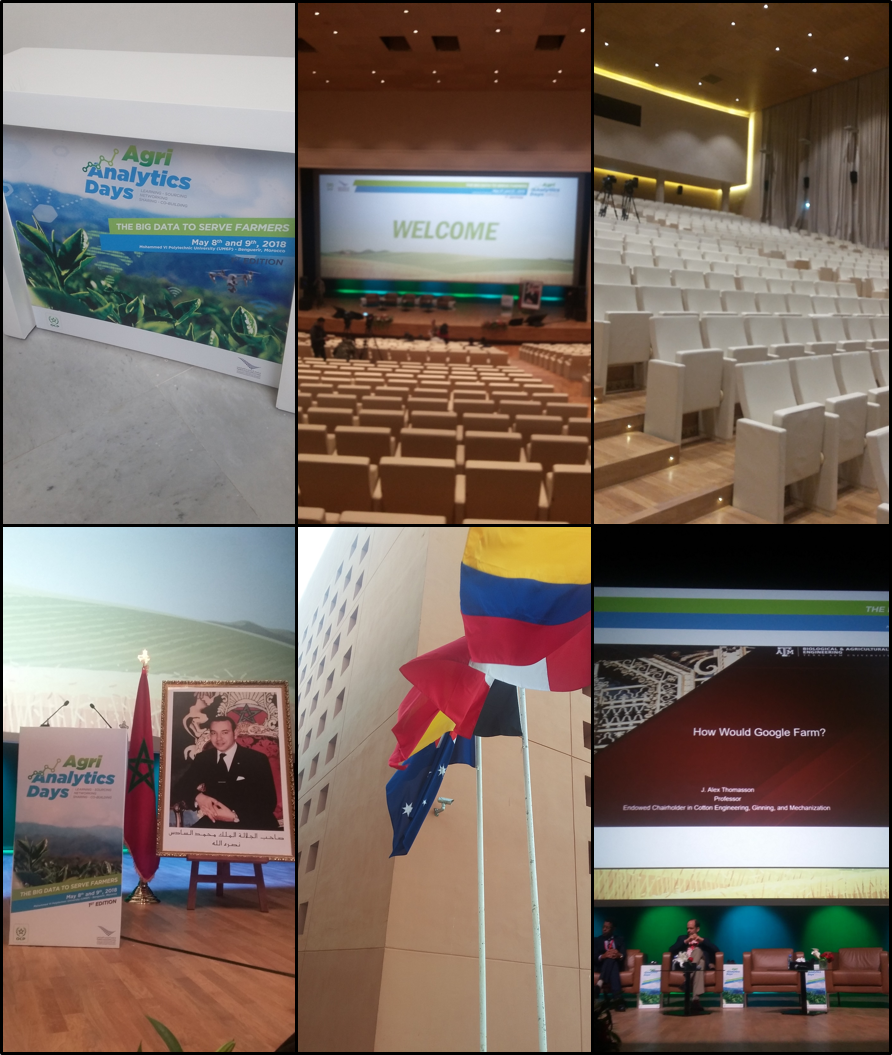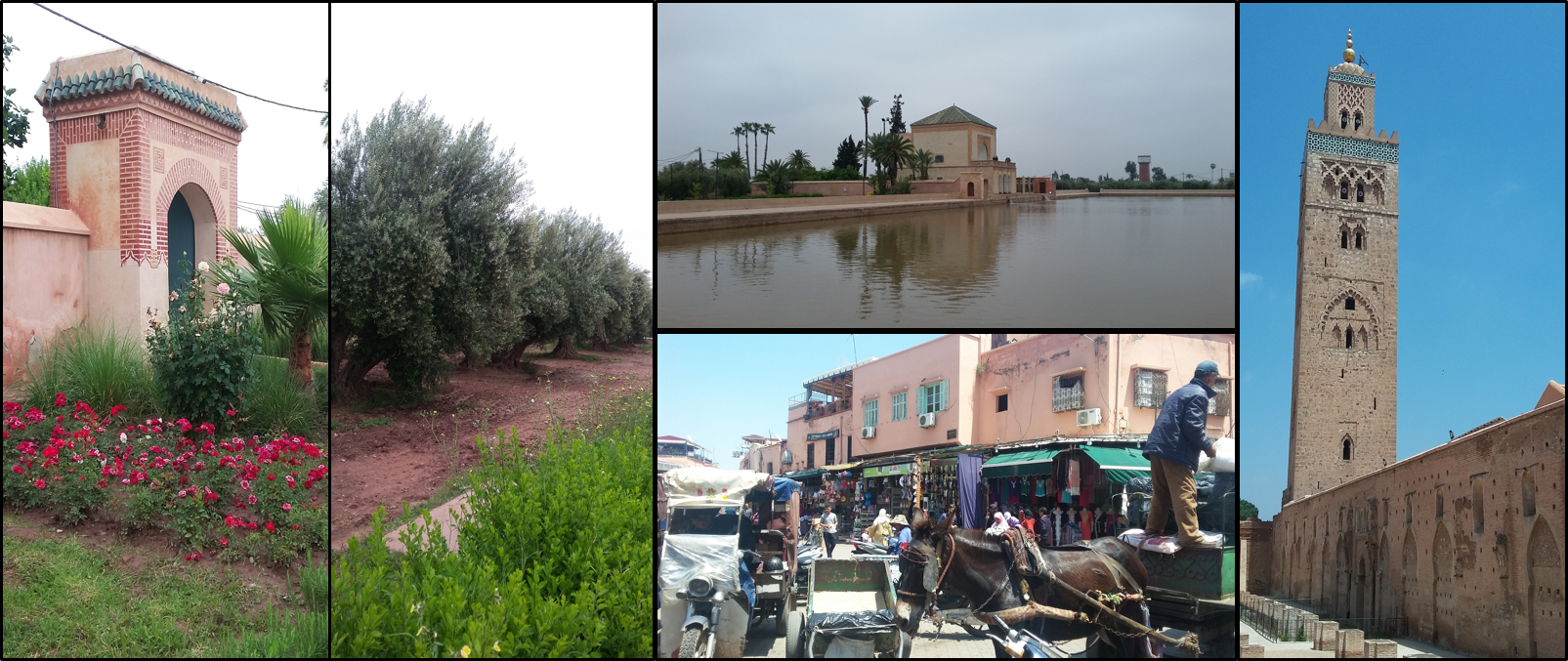This week has taken me to far flung Benguerir in central Morocco to attend the inaugural Agri Analytics meeting. This is a forum about digital agriculture, and I was keen to see how other people in the world are grappling with the data and associated analytics and processes which are driving the present revolution in agriculture throughout the world. These sorts of meetings are becoming regular events around the world, with Australia being no stranger to them either where I have attended a few to date. The format for this particular meeting were a number of invited talks by people from mainly universities and the private sector to a diverse audience which included Government officials dealing in agriculture, public institutions, academics and post-grad students, farmer groups, and digital ag service providers. There was an international flavour to this meeting but most people were from either Africa or Europe, with a few from Latin America and the US. I was the only attendee from Australia, and I met a colleague from New Zealand, so we were kind of special perhaps even exotic. I presented some work on digital soil mapping, and what we know we can do with it already for delivery of critical soil information to support decision making at all manner of spatial scales.
What was it?
OCP Group is a leading producer of phosphate and fertilizer, serving customers around the globe. Building on nearly 100 years of agricultural and industrial knowledge and expertise, OCP is committed to being a globally responsible company, helping to drive sustainable solutions to feed a growing world population.
Aware of the importance of Agri Analytics and Big data in driving change and promoting sustainable agriculture, OCP Group and the Mohammed VI Polytechnic University initiated the Agri Analytics Days which was held on May 8th and 9th, 2018 in BenGuerir city, (60km from Marrakesh), Morocco.
Agri Analytics Days is platform that aims at exploring Big Data to provide new efficient decisionmaking tools for helping agricultural sustainable development. New acquired, aggregated and shared data is a breeding ground for extracting and sharing useful information and knowledge among different actors involved in agriculture and technology domains to provide actionable onfarm decisions.
Today, a number of digital technologies and trends with the potential of entirely transforming the way we work are now becoming available to the agricultural sector. These include big data, internet of things, robotics, etc. Applying these technologies to agriculture have a revolutionary potential in the form of data driven decision-making support that has not been possible before.
The program
Agri Analytics days was a full 2 day program with general plenary-like talks and more directed thematic talks around digital technology, digital soil science, plant and ag production analytics and weather analytics and associated forecasting.
Day 1 program

Day 2 program

My observations and thoughts
The digital agriculture space is very interesting to me in that it seems clear agriculture will be all the better by having all sorts of data streams that can be used to help improve the way it is currently done. The potential flow on benefits to this are the more sustainable use of our natural resources and improved ability to respond to major environmental challenges in a timely manner. It is now abundantly clear that there are many sensors, data platforms and analytics available and innovative ways to measure and monitor phenomena more regularly and in real time. Many talks had examples of this, and it is clearly an active space with new ways to collect, record and manage data.
As researchers in this digital agriculture space it is a very fun and productive time and place to be. There are so many ways to look at and analyse data that there is likely to be a never-ending development of new data, tools and techniques to busy ourselves with. We are all loving what we can do and measure, and pretty much all believe that agriculture will benefit immensely from these developments. I agree with this too, but I was kind of hoping to see at this meeting a few more examples of where the new technology has made tangible impact. I kind of feel we are not too far away from this, and a few examples from Africa indicated a growing use and acceptance of new measurement and analysis approaches in agriculture. I would have liked to see more and in particular it would of have been great benefit to the meeting to have had a few farmers that use new technologies on their farms and hear of their experiences first hand. But I guess this is a difficult thing to organise and I can understand this.
But in any case, if digital agriculture is going to give any benefit to farmers we need to see a few more tangible examples. Clearly private organisations have locked onto the value proposition of digital agriculture, and there are a many growing number of players entering the game. They can see that benefit is possible if not likely in some cases. Officially from the private businesses working in this space all I heard were good news stories. Some of the services offered by the digital agriculture businesses is impressive from the soil science perspective in terms of measurement and mapping. However, it is hard to tell what expertise and rigour is being put into actually generating the information that farmers are likely to get out of them. I get the feeling that there is much scope for cowboys to enter into this space because an opportunity is there. Its just how business operates really. From a unofficial discussion I had with someone I did get some insight into the difficulties of being a player in the space particularly for those at the forefront of taking research and trying to commercialise it. People that I spoke to had invested significantly in vis-NIR measurement for characterisation of soils but are not seeing the benefits of improved predictions with this technology to warrant wide spread use. It may be useful when there is no information on hand, but when it is used to complement other exiting measurements and data out there for improved recommendations (for fertiliser inputs etc.) those recommendations are often poorer than when just using exclusively the existing information. This is a problem as you want better recommendations with this technology not worse. The problem with vis-NIR, while useful, is that it is just not quite there in terms of the accuracy to deliver the precision needed for improved recommendations about fertiliser inputs. There is hope out there though and there is potential to make improvements but it costs money, and being at the forefront of the game is often dangerous because others are just waiting to see where you go wrong then swoop in to take up the where the others have had to stop. I guess this is how progress is made but inevitably progress will be slow. I still think there is hope for vi-NIR, it has its both pros and cons, but I am glad I am not in the business game of trying to get this technology into commercialised soil measurement contexts. The current trend I observed now is the mobile laboratory that goes to the site of measurement and is equipment with instrumentation for processing soils and then subjected to mid-infrared and XRF scanning. Those at the forefront of commercialisation of portablised and insitu measurement of soils are taking huge financial lashes and are trying to get out of the game because of this. It will come soon, but the technology and processes are just not quite there yet.
It is just me, but I am always a little suspicious of private business and their purported strengths and claims. I do admire the ones that actually try to be at the forefront of new research, but recognise the riskiness of this endeavour from the financial point of view. I have no time for those waiting on the wings to swoop in and grab their opportunity to make money and don’t have any real interest in agriculture or knowledge of it. I did not see any of these type of people around this week thankfully, but I feel the people that represented the few businesses and consultancies that were were more disposed to the finance and business side of things rather that the real development of the technology and science underpinning it. In short there was often a lack of detail around things which was a bit frustrating to me and made me switch off a bit (or maybe that was just the jet lag).
On the back of all this there was the talk from Rothamsted Research that was really encouraging from the point of view that the UK Government have identified a real value in digital agriculture and have backed this up with the Rothamsted Agrimetrics research organisation. This is a fully funded digital agriculture research arm of Rothamsted. I like it because they genuinely have a clear objective that is not jaded by commercial interests. Well that’s what it seems presently, but even that institutionalised research and commercialisation synergy that is happening more often these days makes it difficult to make a robust assessment of this. Nevertheless it was encouraging to see that is some serious effort and resources being put into getting digital agriculture to become mainstream agriculture. I know of only few examples of others doing similar things to what Rothamsted are doing. The CSIRO in Australia I think are getting onto it but have probably not established themselves to the same extent that Rothamsted have. Saying that however, the organisational structure of Agrimetrics does appear to date mainly have expertise in data science principally, without any clear synergy with the sciences that do work in agriculture. I am sure Rothamsted have that expertise in spades, but I would be interested to see specifically how agricultural research can be piped into the Agrimetrics scope of work.
Examples of other grower funded or Government and non-Government funded programs that are now moving into the digital agriculture space include the International Plant Nutrition Institute, Global Open Data for Agriculture and Nutrition, and a project related to phase 2 of the African Soil Information Service (AfSIS). It was hard to tell what specific measures were being done in these organisations in the digital agriculture space other than that they recognise the value of it and want to stay relevant in supporting their stakeholders. The phase 2 of AfSIS appears interesting and will be geared towards more localised agricultural management recommendations to support farmers rather than continental soil mapping. The updating of the AfSIS maps is still part of the program but I was unable to get any specific information about what this might entail and the sampling effort to support such work. Something aside from all the digital agriculture talk, I was fascinated to here from the speaker from IPNI about some of the experiments for testing responses to fertiliser inputs within a precision agriculture setting. The work on the enhanced learning blocks, which are essentially randomised block designs incorporated into a field that allow one to unbiasedly determine response effects to treatments. On the matter of fertiliser response curves, I was made aware of from another person from IPNI about the significant amount of work done in Australia in this space. The Better Fertiliser Decisions data interrogator aggregates numerous fertiliser trial data from around the country to give farmers useful information about optimal fertiliser rates that would be suitable to their specific location. I thought this was really cool and will need to be looked at further I think. It is funny though that it got on my radar only through talking about random stuff with my colleagues from the USA.
So what did I learn over the past few days? Digital agriculture has global appeal. I thought it only extended to westernised nations and to those who had the resources available to make it a reality. Seeing the many people from Africa being vocally enthusiastic, and providing examples of current use cases was something that made me quite impressed. I am now also convinced that we can measure and monitor all manner of things without any problem, but are a bit of the way off on getting these new things into the lives and operations of the everyday farmers and agriculturalists. Precision Ag has been around for over 20 years but it does not have blanket coverage across aquaculture. Digital agriculture is slightly broader in scope than precision agriculture, but can we expect the have the same staggered development and use that has been observed for precision agriculture (rhetorical question). I kind of think the answer is a yes. In any case I walk away from this meeting satisfied that I love what I do in terms of soil science research, but a little challenged that some of the things we are doing there may take years to come into fruition in the mainstream to make real benefits to agriculture. As long as the research keeps getting done then we can at least get comfort that our work on addressing the contemporary issues of our time can at least be potentially realised, but we like to dither around a bit, so who knows when that is likely to happen (another rhetorical question).
Some photos
This trip to Morocco did not give me much time to look around the place. After the conference, i did get to do a day trip to Marrakech which i enjoyed a great deal. Here are some photos of my time spent in Morocco.

